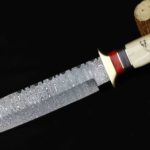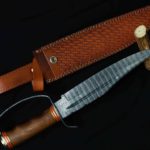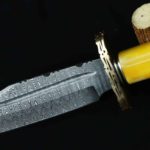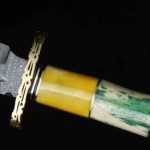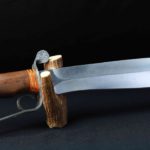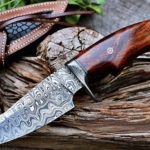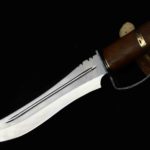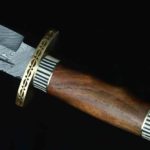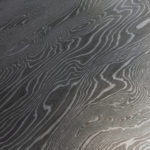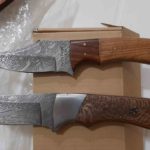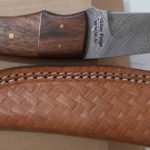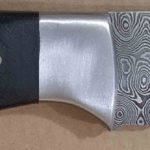
Damascus Steel Products
Pattern Welded Steel Origins
During the first millennium BC the Celtic smiths acquired control of hot iron working, in particular for the production of strong sword blades. The latter were built by forge welding more or less carburized pieces of smelted iron. Damask steel appears as a pattern-welded composite resulting from this know-how several centuries later.One of the most profound stories relating to western culture and Damascus I found was from a painting in Ranchi India, it is part of a larger mural depicting Alexander the Great and King Puru of India. The focus of the picture is King Puru handing Alexander his sword as a token of espect. What is interesting however is the box being carrier behind the king, this is said to have contained a single lump of Wootz steel, note how it is not gold jewellery in box. In times like these Wootz was the strongest most feared material for weaponry, this made it a prize worth more than decoration.
We are Smiths
We take pride and are confident of ourselves to be smiths of whichever channel we put our hands into. We have recently joined hands with a manufacturing plant who has been one of the pioneers in Damascus Steel knife manufacturing from the last 14 years. Damascus Steel employs unique methods using different materials to create the final product. We export Damascus steel billets, blank blades, finish knives, hunting knives and daggers. We guarantee use of high grade imported materials like Stainless Steel SS D2 and Stainless Steel SS 440C to produce the fixed blade finish knives, hunting knives and daggers. We have more than 50 full time highly skilled employees.
Materials We Used
Stainless Steel (SS 440C)
Stainless Steel D2
Damascus Steel
Stainless Steel (SS 420 J2)
Patterns We Mastered
Random
Ladder
Ladder bios
Rain Drop
Fire Storm
We are different
We purchase and import our material from renowned suppliers which ensures the quality of all our products. The steel that we use guarantees 192 to 768 number of layers depending on the length of the billet. With continuous R&D and unique method to form Damascus Steel, we guarantee blade hardness between 58 to 60 Rockwell. Our unique method of Damascus formation gives us very fine and unique patterns. We employ customized etching techniques to properly enhance Damascus patterns on our blades.
Damascus Development Steps
Billet Making
Design, Model Drawing
Template Blade Cutting
Surface Grinding & Straightening
Initial Edge Grinding
Hardening & Heat Treatment
Final Edge Grinding & Polishing
Etching
Handle Fitting & QC
Handle Fitting & QC
Final QC and Packing
Handle Polishing & Edge Sharpening
Product Gallery (Click on pictures to enlarge)








